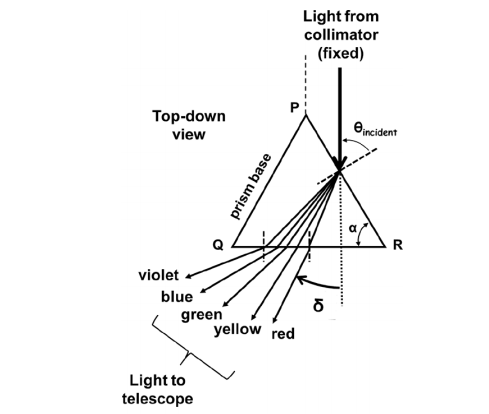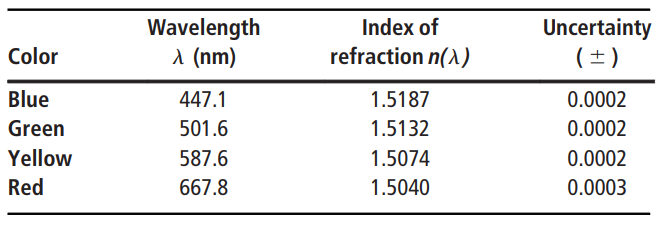In the recently published ‘Characterization of 3D printed lenses and diffraction gratings made by DLP additive manufacturing,’ international researchers studied digital fabrication of optical parts using DLP 3D printing.
Examining the benefits of DLP technology, the researchers meant to explore the high spatial resolution made available, along with investigating the potential of new optical functionality. The research team used an Autodesk Ember 3D printer with Standard Clear PR48 photocurable resin for the fabrication of lenses and diffraction gratings, with lenses printed at 0° and the diffraction gratings printed at 90°. Much beloved by researchers, the Ember sadly was canceled but it still continues to spark research.
For the 3D printing process, the researchers modeled the parts in Autodesk Inventor, using PrintStudio for slicing, the Autodesk Ember 3D printer, and PR48 resin, smoothing with sandpaper, and then polishing.
In this study and to characterize optical components overall, the researchers had to study the interaction of light with the materials used.
“The refractive index and the per cent transmission were experimentally determined at different wavelengths spanning the visible region of the electromagnetic spectrum,” stated the authors.
To figure the refractive index of the materials, the research team used the following:
- Prism spectrometer
- Helium discharge tube
- Prism manufactured using photocurable resin
“The triangular prism was manufactured (not printed) with PR48 resin, cured with a UV lamp with a wavelength of 405 nm and subsequently polished and buffed,” stated the researchers. “After processing, all apical angles were measured at 60° as determined by a protractor.”
Only five main wavelengths were recognized as the authors checked out the light refraction—and only four could be measured with use as they attempted to use the spectrometer.
‘Bessel’s method,’ based on the reversibility of light, was used for measuring the lens’ focal length after 3D printing. They noted that it is possible to fabricate converging lenses with focal lengths that ‘agree reasonably well,’ with the polished lens differing by only 0.6.
The authors also pointed out that there is a difference between the theoretical and experimental focal length, but they believe that is because polishing ‘alters the radii’ of the lens curvature. There are also other ‘inherent limitations’ affecting lens performance such as approximations to a curved surface in the 3D software, printing resolution of the Ember, and problems with anisotropy.
“One of the most interesting results from this work was the manufacture of diffraction gratings using 3D printing. An analysis of the diffraction pattern produced by these printed gratings yielded estimates for the slit periodicity and effective slit width,” concluded the authors. “These gratings are unique because the effective slit width fills the entire volume of the printed part. This aspect makes it possible to integrate two or more optical devices in a single printed part. For example, production of a lens combined with a diffraction grating.
“To the best of the authors’ knowledge, no 3D printed gratings using these techniques have been reported in academic literature and no reports of a fully characterized printed grating have been produced. This work further discusses the use of additive manufacturing techniques, particularly the DLP method, and studies the effect of layer thickness on the resulting gratings. The effects of layered polymerization on the final product are shown to affect the way in which light can be diffracted, hence producing a method for production of tunable and repeatable diffraction gratings.”
3D printing in optics is becoming increasingly popular as there are so many benefits offered to this industry from greater affordability to speed, and the ability to experiment and customize. Today, researchers and manufacturers are creating techniques for making smoother parts, micro-optical components, as well as affordable, customized lenses.
What do you think of this news? Let us know your thoughts! Join the discussion of this and other 3D printing topics at 3DPrintBoard.com.
[Source / Images: ‘Characterization of 3D printed lenses and diffraction gratings made by DLP additive manufacturing’]Subscribe to Our Email Newsletter
Stay up-to-date on all the latest news from the 3D printing industry and receive information and offers from third party vendors.
You May Also Like
3D Printing News Briefs, April 13, 2024: Robotics, Orthotics, & Hypersonics
In 3D Printing News Briefs today, we’re focusing first on robotics, as Carnegie Mellon University’s new Robotics Innovation Center will house several community outreach programs, and Ugogo3D is now working...
Rail Giant Alstom Saves $15M with 3D Printing Automation Software 3D Spark
3D Spark has entered into a three-year deal with the rail giant Alstom. Alstom, a transport behemoth with annual revenues of $16 billion, specializes in the manufacture of trains, trams,...
Meltio Expands Global Reach with New Partnerships in the Americas and Europe
Spanish 3D printing manufacturer Meltio has expanded its sales network across the globe. With the addition of three new partners in the United States, Brazil, Argentina, and Italy, Meltio aims...
3D Printing Webinar and Event Roundup: April 7, 2024
Webinars and events in the 3D printing industry are picking back up this week! Sea-Air-Space is coming to Maryland, and SAE International is sponsoring a 3D Systems webinar about 3D...




































